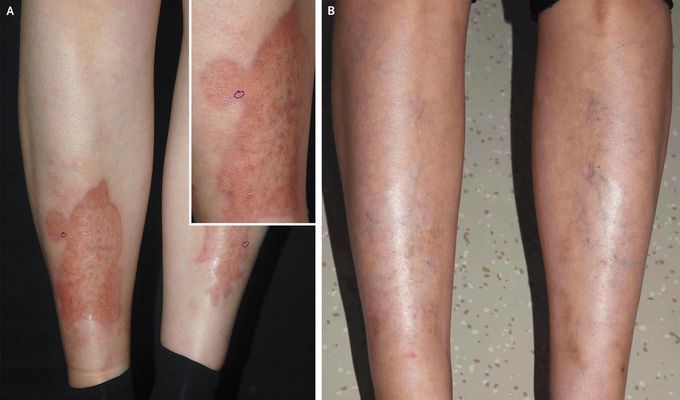


Necrobiosis Lipoidica
A 43-year-old woman presented to the dermatology clinic with an 8-year history of yellow-brown spots on her shins. The lesions had been asymptomatic, and she had not sought care for them until they had grown in size. She had no history of diabetes mellitus, hypertension, or thyroid disease. On physical examination, atrophic yellow-brown plaques with telangiectasias and irregular violaceous borders were observed on both shins (Panel A and inset). A skin biopsy of the right shin was performed. Histopathological analysis showed several layers of necrobiosis within the dermis, perivascular inflammatory-cell infiltrates, collagen degeneration, and findings consistent with granulomatous dermatitis. A diagnosis of necrobiosis lipoidica was made. Necrobiosis lipoidica is a chronic granulomatous skin disorder that is frequently associated with diabetes and may precede the development of impaired glucose control. However, the condition is also seen in persons without diabetes, as occurred in this patient, who had normal results on glycemic testing. There are no evidence-based guidelines for treatment, and the lesions often abate on their own. In this case, topical glucocorticoids were administered, but the patient discontinued treatment after 1 month owing to minimal improvement and concerns about side effects. At follow-up performed 13 years after the patient’s initial visit, the plaques had resolved (Panel B) and her glycemic control remained normal.

